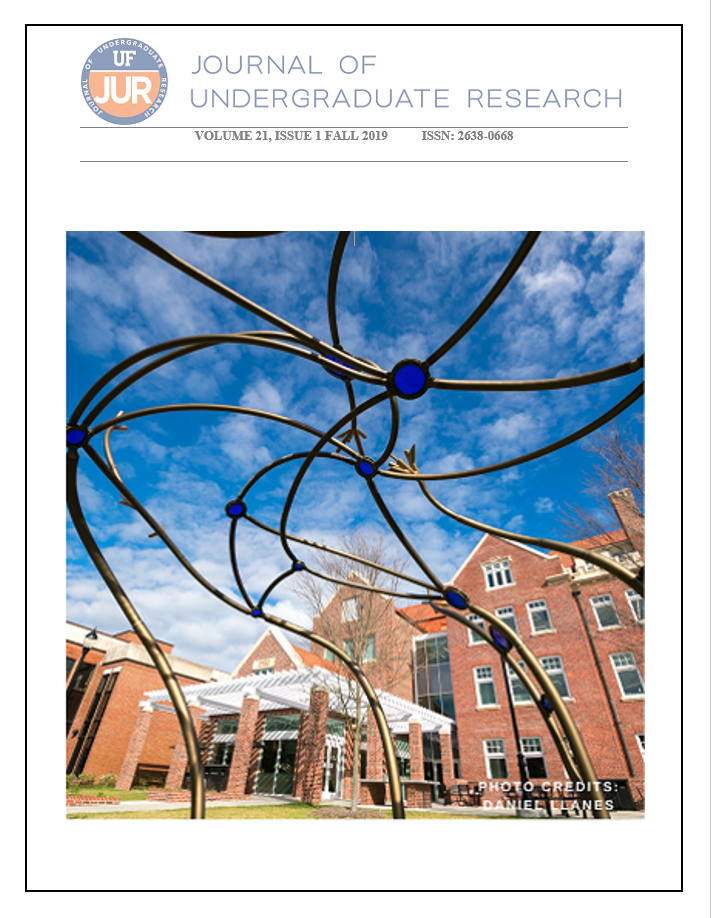Screening Fecal Methanogens in Five Orders of Mammals
DOI:
https://doi.org/10.32473/ufjur.v21i1.108561Abstract
Animal waste has been studied as a potential fuel source via anaerobic digestion. Feces have also been used to inoculate biodigesters. Biodigesters are a waste treatment solution that use anaerobic digestion to convert organic matter into methane. They utilize microbes to break down organic matter into substrates which are then converted into methane as fuel. The final step’s productivity depends on the methanogen content of the biodigester. This study evaluated the feces of captive animals for use as a methanogenic inoculum. The aim was to assess the potential of different feces for methanogen contribution through a literature review and sample analysis via fluorescence microscopy to observe F420 autofluorescence. Coenzyme F420 is a fluorescent coenzyme involved in redox reactions in methanogens and is used in their identification and observation. The samples were from herbivores in the orders Rodentia (rodents), Lagomorpha (rabbits), Perissodactyla (odd-toed ungulates), Artiodactyla (even-toed ungulates), and Diprotodontia (some marsupials). The literature review favored goats and sheep over the other animals in the study. The feces from each animal species tested were observed to have some methanogen presence, but the levels were low and differences were not discernible. Overall, the results of the sample analyses were inconclusive due to the scarcity of methanogens and obscuration due to foliage fragments.
Keywords: Fecal, Methanogens, Coenzyme F420, Anaerobic digestion, Biodigester, Inoculum
Metrics
Downloads
Published
Issue
Section
License
Some journals stipulate that submitted articles cannot be under consideration for publication or published in another journal. The student-author and mentor have the option of determining which journal the paper will be submitted to first. UF JUR accepts papers that have been published in other journals or might be published in the future. It is the responsibility of the student-author and mentor to determine whether another journal will accept a paper that has been published in UF JUR.

